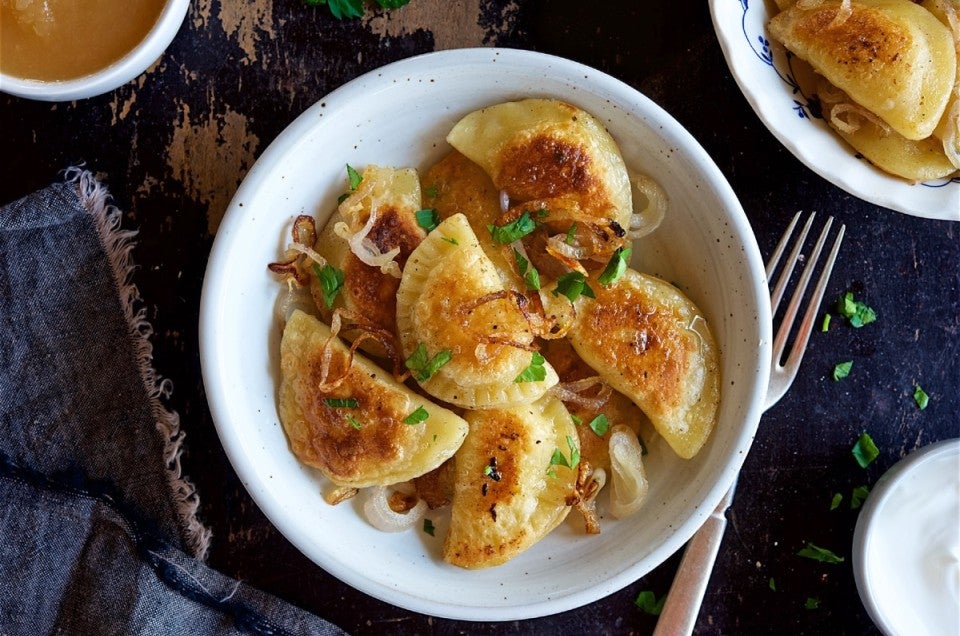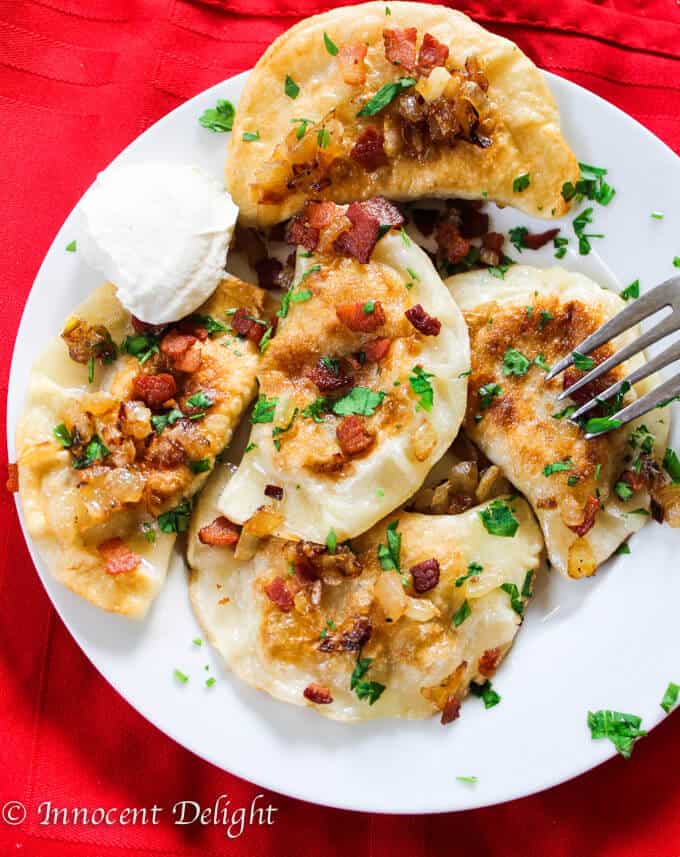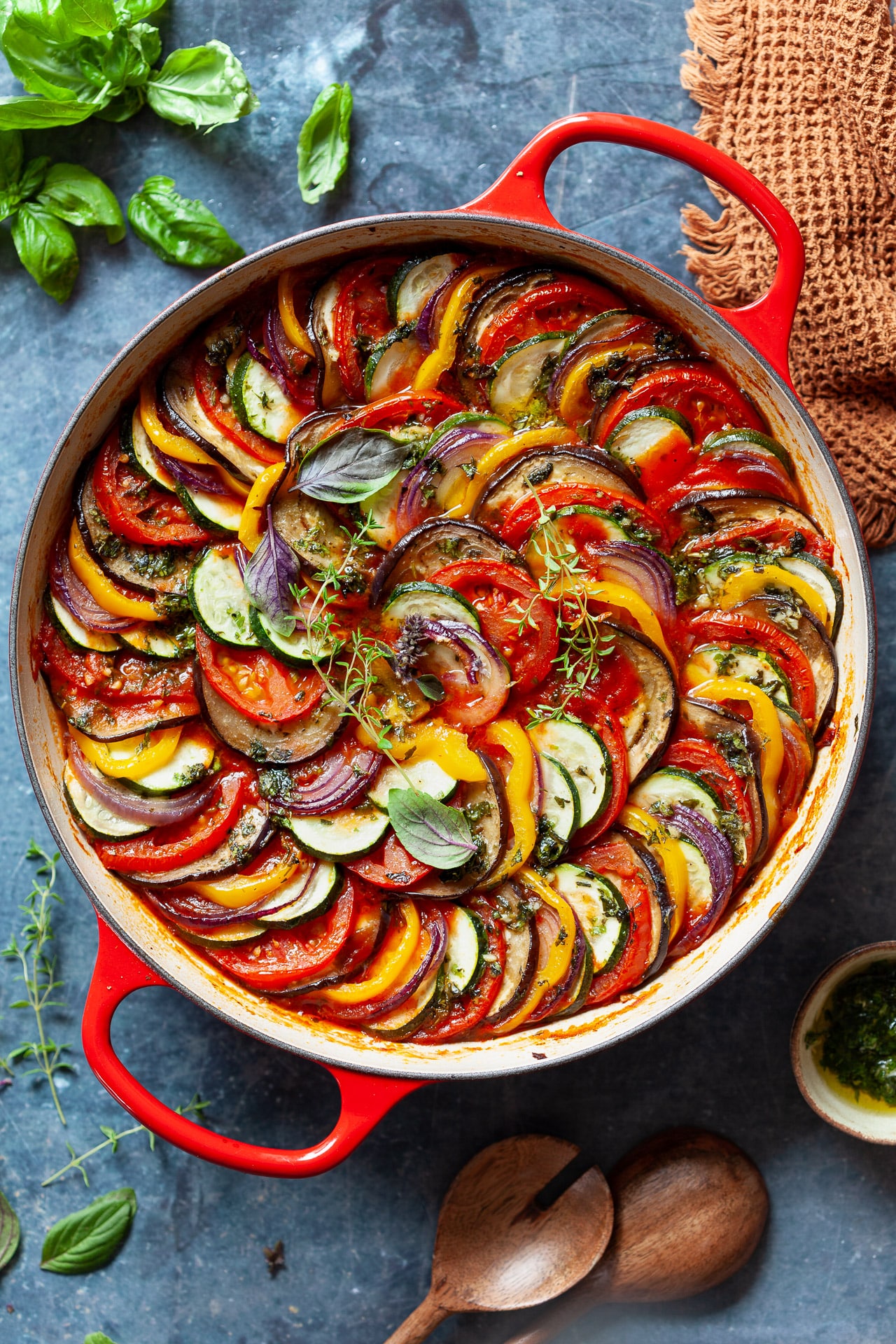A Pocketful of Happiness: Exploring the World of Polish Pierogi
Related Articles
- A Journey Through Flavors: The Story Of The Samosa, India’s Beloved Snack
- Bangers And Mash: A British Classic
- A Culinary Journey Through The Middle East: Shawarma, Falafel, And More You Can Make At Home
- Chow Mein: A Culinary Journey Through Time And Taste
- A Slice Of History: The Enduring Allure Of Pizza Margherita
Introduction
Uncover the latest details about A Pocketful of Happiness: Exploring the World of Polish Pierogi in this comprehensive guide.
A Pocketful of Happiness: Exploring the World of Polish Pierogi

Pierogi, those delightful little pockets of joy, are more than just a dish in Poland. They are a cultural icon, a symbol of comfort, and a testament to the country’s rich culinary heritage. From humble beginnings to modern-day variations, the history and evolution of pierogi are as fascinating as the flavors they offer.
A Journey Through Time: The Origins of Pierogi
The exact origins of pierogi remain shrouded in the mists of time, but their story is interwoven with the tapestry of Eastern European history. While some historians trace them back to the 14th century, others believe they arrived even earlier, brought by migrating tribes from the East.
One popular theory suggests that pierogi evolved from the "varenyky," a similar dish enjoyed by Ukrainians and Russians. These dumplings were typically filled with simple ingredients like cheese, potatoes, and cabbage, reflecting the resourcefulness of a people striving to make the most of their harvests.
The arrival of pierogi in Poland coincided with a period of cultural exchange and culinary innovation. As trade routes flourished and different cultures interacted, new flavors and techniques began to influence the humble dumpling. This gave rise to the diverse range of fillings we see today, from the hearty and traditional to the more modern and experimental.
More Than Just a Dumpling: The Cultural Significance of Pierogi
Beyond their deliciousness, pierogi hold a special place in Polish culture. They are more than just a food; they are a symbol of family, tradition, and togetherness. The act of making pierogi is often a shared experience, bringing generations together in the kitchen.
This communal spirit is reflected in the many occasions where pierogi are traditionally enjoyed:
- Family Gatherings: From Sunday dinners to festive holidays like Christmas and Easter, pierogi are a staple on Polish tables.
- Weddings and Celebrations: No Polish celebration is complete without a generous helping of pierogi, signifying abundance and good fortune.
- Religious Festivals: During Lent, pierogi filled with sauerkraut or mushrooms are often served, reflecting the tradition of abstaining from meat.

The importance of pierogi is further highlighted by the numerous regional variations and recipes that have emerged over the centuries. Each region has its own unique way of preparing and filling these beloved dumplings, making them a true testament to the diverse culinary landscape of Poland.
Mastering the Art of Pierogi Making: A Step-by-Step Guide
Creating the perfect pierogi is an art form, a delicate dance of dough, filling, and technique. But fear not, even novice cooks can master this culinary craft with a little patience and practice.
The Dough: A Foundation for Flavor
The secret to perfect pierogi lies in the dough. It should be supple, yet strong enough to hold the filling without tearing. Here’s a classic recipe:
Ingredients:
- 2 cups all-purpose flour
- 1 teaspoon salt
- 1 egg
- 1 tablespoon vegetable oil
- 1/2 cup warm water

Instructions:
- Combine Dry Ingredients: In a large bowl, whisk together the flour and salt.
- Add Wet Ingredients: Create a well in the center of the flour mixture and add the egg, oil, and warm water.
- Knead the Dough: Use your hands to combine the ingredients, gradually incorporating the flour into the wet mixture. Knead the dough for 5-7 minutes, until it becomes smooth and elastic.
- Rest the Dough: Wrap the dough in plastic wrap and let it rest at room temperature for 30 minutes.
The Filling: A Culinary Symphony
The filling is where the true magic of pierogi happens. It can be as simple or as elaborate as you like, reflecting your personal taste and culinary creativity. Here are some popular options:
Classic Fillings:
- Potato and Cheese: A timeless favorite, this filling combines boiled potatoes, grated cheese (often a blend of farmer’s cheese and ricotta), and seasonings like salt, pepper, and caraway seeds.
- Sauerkraut: This savory filling is often enhanced with sautéed onions and bacon for added depth of flavor.
- Mushroom: A vegetarian delight, this filling uses sautéed mushrooms, onions, and spices like paprika and garlic.
Modern Variations:
- Spinach and Feta: A fresh and flavorful option, this filling combines sautéed spinach, crumbled feta cheese, and a touch of garlic.
- Beef and Cabbage: A hearty and satisfying choice, this filling uses ground beef, chopped cabbage, and traditional Polish seasonings.
- Sweet Cheese: For a sweet treat, you can fill your pierogi with a mixture of farmer’s cheese, sugar, and vanilla.
Tips for Filling Success:
- Cook the Filling: Many fillings, like potato and cheese, require pre-cooking before being added to the pierogi. This ensures they are cooked through and prevent the dough from becoming soggy.
- Seasoning is Key: Don’t be afraid to experiment with different spices and herbs to enhance the flavors of your filling.
- Balance is Important: The filling should complement the dough, not overpower it. Aim for a balance of flavors and textures.
Shaping and Cooking: Bringing the Pierogi to Life
Once you’ve mastered the dough and filling, it’s time to shape your pierogi. This can be done by hand or with a specialized pierogi mold.
Hand Shaping:
- Roll Out the Dough: Divide the dough into smaller portions and roll each portion out into a thin sheet.
- Cut the Dough: Using a cookie cutter or a sharp knife, cut out circles from the rolled-out dough.
- Fill the Dough: Place a generous spoonful of filling in the center of each circle.
- Fold and Seal: Fold the circle in half, bringing the edges together to form a half-moon shape. Pinch the edges together to seal the filling inside.
- Crimp the Edges: To create a decorative and secure seal, crimp the edges of the pierogi using a fork or your fingers.
Pierogi Mold:
- Prepare the Dough: Roll out the dough into a thin sheet, slightly larger than the mold.
- Place the Mold: Place the pierogi mold on a lightly floured surface.
- Press the Dough: Gently press the rolled-out dough into the mold, ensuring it fills all the cavities.
- Fill the Mold: Spoon the filling into the designated sections of the mold.
- Close the Mold: Carefully close the mold and press firmly to seal the pierogi.
- Eject the Pierogi: Gently lift the mold to release the perfectly shaped pierogi.
Cooking Methods:
- Boiling: This is the most traditional method for cooking pierogi. Simply bring a large pot of salted water to a boil and gently add the pierogi. Cook for 5-7 minutes, or until they float to the surface.
- Pan-Frying: For a crispy exterior, pan-fry the pierogi in a hot skillet with a little oil. This method works best with thicker fillings that can withstand the heat.
- Baking: For a more convenient option, you can bake the pierogi in a preheated oven. Place the pierogi on a baking sheet lined with parchment paper and bake for 15-20 minutes, or until golden brown.
Elevating the Experience: Delicious Toppings and Sauces
Pierogi are delicious on their own, but they can be elevated to even greater heights with the addition of toppings and sauces.
Classic Toppings:
- Fried Onions: Adding a generous sprinkle of crispy fried onions adds a delightful crunch and savory flavor.
- Sour Cream: A dollop of sour cream provides a creamy and tangy counterpoint to the savory fillings.
- Butter: A simple yet effective topping, melted butter adds richness and depth of flavor.
Sauces:
- Mushroom Sauce: A creamy and earthy sauce made with sautéed mushrooms, onions, and cream.
- Sauerkraut Sauce: A tangy and flavorful sauce made with simmered sauerkraut, often enhanced with bacon or sausage.
- Caramelized Onion Sauce: A sweet and savory sauce made with caramelized onions, often served with potato and cheese pierogi.
Tips for Toppings and Sauces:
- Temperature Matters: Toppings and sauces should be served warm, complementing the temperature of the pierogi.
- Balance is Key: The toppings and sauces should enhance the flavors of the pierogi, not overpower them.
- Get Creative: Don’t be afraid to experiment with different toppings and sauces to create your own unique combinations.
Culinary Adventures: Exploring the World of Pierogi Variations
The beauty of pierogi lies in their versatility. The basic recipe can be adapted to create an endless array of delicious variations, reflecting the diverse culinary traditions of Poland and beyond.
Regional Delights: A Culinary Tour of Poland
Each region of Poland has its own unique take on pierogi, showcasing local ingredients and culinary traditions.
- Silesia: Known for its hearty and flavorful cuisine, Silesia features pierogi filled with sauerkraut and bacon, often served with a rich and creamy sauce.
- Mazovia: The heartland of Poland, Mazovia is famous for its potato and cheese pierogi, often served with a simple dollop of sour cream or a sprinkle of fried onions.
- Lesser Poland: This region is known for its diverse range of fillings, including mushroom, spinach, and sweet cheese pierogi.
- Warmia and Masuria: These northern regions are known for their use of fresh ingredients, such as wild mushrooms and local cheeses, in their pierogi fillings.
Beyond the Borders: Global Inspiration
Pierogi have also traveled beyond the borders of Poland, inspiring culinary creations around the world.
- Ukraine: Varenyky, the Ukrainian cousin of pierogi, are often filled with potato, cheese, or cabbage, and are enjoyed with a variety of toppings, including sour cream, butter, and fried onions.
- Russia: Pelmeni, Russian dumplings, are typically filled with minced meat, often served with a savory broth or a creamy sauce.
- United States: Pierogi have become a popular dish in the United States, particularly among Polish-American communities. They are often served as a main course, a side dish, or a snack.
Culinary Fusion: A Modern Twist on Tradition
Modern chefs are taking the classic pierogi recipe and reinterpreting it with global flavors and innovative techniques.
- Asian-Inspired: Pierogi filled with stir-fried vegetables, tofu, or kimchi, served with a spicy dipping sauce.
- Mediterranean Fusion: Pierogi filled with feta cheese, sun-dried tomatoes, and spinach, served with a lemon-herb sauce.
- Sweet and Savory: Pierogi filled with savory fillings like mushrooms and cheese, served with a drizzle of honey or a sprinkle of cinnamon.
Culinary Tips for Pierogi Perfection
- Use High-Quality Ingredients: The quality of your ingredients will directly impact the flavor and texture of your pierogi.
- Don’t Overcrowd the Pot: When boiling pierogi, make sure to leave enough space for them to cook evenly.
- Don’t Overcook the Dough: Overcooked dough can become tough and chewy. Cook the pierogi until they float to the surface, then remove them immediately from the water.
- Serve Immediately: Pierogi are best enjoyed fresh, so serve them as soon as they are cooked.
- Experiment and Have Fun: Pierogi are a blank canvas for culinary creativity. Don’t be afraid to experiment with different fillings, toppings, and sauces to create your own unique variations.
Conclusion: A Pocketful of Happiness
From humble beginnings to modern-day variations, pierogi have captured hearts and palates around the world. They are a testament to the culinary ingenuity of the Polish people and a symbol of family, tradition, and togetherness. So, the next time you find yourself craving comfort food, reach for a plate of pierogi. You’ll be rewarded with a pocketful of happiness, one delicious bite at a time.
Closure
Thank you for reading! Stay with us for more insights on A Pocketful of Happiness: Exploring the World of Polish Pierogi.
Make sure to follow us for more exciting news and reviews.
Feel free to share your experience with A Pocketful of Happiness: Exploring the World of Polish Pierogi in the comment section.
Stay informed with our next updates on A Pocketful of Happiness: Exploring the World of Polish Pierogi and other exciting topics.





